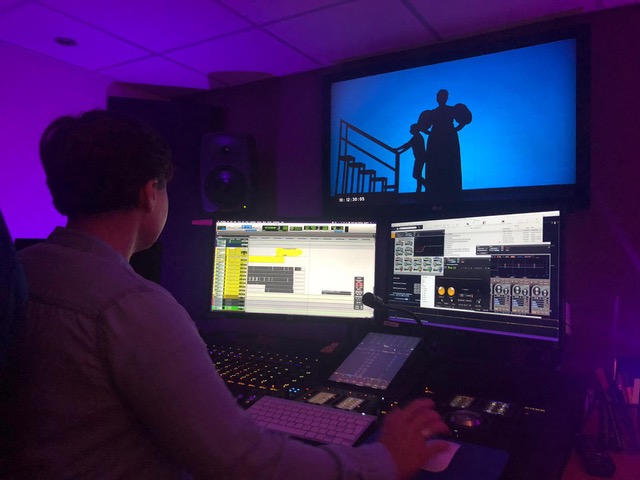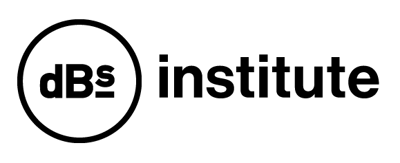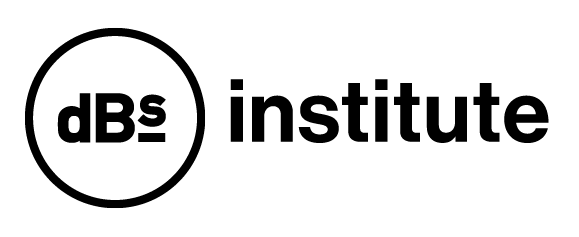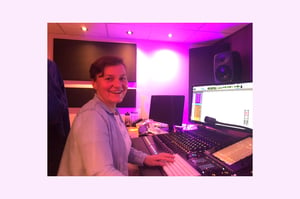Award-winning sound editor and dBs lecturer Ania Przygoda sheds some light on how the sounds you hear in films are really made.
Did you know that when you watch a film, the images you see and the sounds you hear are often completely different things? To find out more about why sound effects are added to films and how they are created, we sat down with award-winning sound editor and visiting lecturer on our Sound for Film and TV degree, Ania Przygoda.
Why is there a need to add sound effects to films?
Even with the most advanced equipment, recording any sound other than dialogue on-set can be tricky. As a result, sound effects tend to be recorded in a soundproof stage, as this gives you more control over them when you are editing. There are certain limitations to recording sound effects separately but this process also gives you a creative freedom.
For obvious reasons, there are many sounds we can’t recreate using a recording of the action you see on-screen. For example if you are recreating a fight scene, you don’t want to actually punch someone. You want to mimic that sound using non-realistic techniques. So instead, we might use the sound of frozen vegetables being snapped.
You also have to consider that the real sound of someone fighting is actually not that exciting. In films, the aim is often to make everything seem better and bigger than reality. We’re used to hearing big explosions or loud thumps when someone is being punched, even if it doesn’t sound like that in real life. So what we are trying to do with sound effects is create a fiction that is believable.
Can you share some examples of how you’ve created sound effects for films and TV?
Often sound effects are created by manipulating a natural recording and layering in other sounds. For one of the projects I worked on, there was a scene with someone drowning in really high waves. The waves were shown in slow motion, and when they were growing and curling, I stretched out and pitched-up the natural sound of the water and layered in a metal screech. In the moment when the waves were crashing down on the surface of the ocean, I added in some metal explosions.
For another film, which was more horror style, I needed to make some ‘whooshing’ sounds to add dramatic effect for when the characters would turn around and things like that. To create these sounds I recorded myself blowing out a candle close to the microphone. I then stretched the recording and applied EQ to muffle it a little, before adding some church reverb to make it sound really big. I’ve used these whooshes for several of my projects now, for example when I need to highlight transitions between scenes or the movement of text in a trailer.
Is it common for sound editors to re-use sound effects then?
Yes. It doesn’t work like film music where you have to pay royalties. There are sound libraries that sound editors like me buy, because you’re not always able to record every sound you need. I also have my own library of sounds that I have created, but what makes every sound edit unique is how we layer these sounds in each instance. There’s always a broader atmosphere the sounds are embedded in and this is different in every film.
 Ania at work in the studio
Ania at work in the studio
What dictates whether you create a sound from scratch or take it from a sound library?
It’s mostly practical reasons. There’s a type of sound effect that we call Foley, which is used for personal sounds like movements, footsteps etc. These are very specific to the individual characters within a film, so they need to be recorded from scratch, in time with the picture.
In terms of atmospheres, if a film is happening on the African savannah, I can’t be there to record the sounds I need, so those kind of sound effects would come from a sound library. Basically, if it’s something I can record and it has to be individual to the film I will record it. If I can’t record it myself or there are time constraints I will use a sound library.
Tell me a bit about your process. How do you come up with ideas for sound effects?
There is an element of experimentation and playing with sounds in your head.
When I start work on a new film, I would be in conversation with the director and they would perhaps send me the script, some early shots or a first cut. That’s when my imagination starts working. I’ll see how dark the picture is, where the scenes are set, what the textures and colours of the picture are like. This will help me come up with ideas.
The director will also often have a vision about how they want their film to sound and I’ll try to translate that vision. They won’t say exactly ‘oh use a metal sound’. Instead, they'll talk more in terms of emotion, what they want people to feel, and then I’ll think about how I can deliver against that.
It often takes several attempts and feedback sessions. I’ll work on something, send it to the director and then they’ll send me notes. I often get inspiration from other films I’ve watched. If a film has a similar scene or atmosphere, I’ll often explore how I can recreate that.
What determines which sounds you’ll use to evoke certain emotions?
A lot of it is based on association, what we’ve seen before and what people are used to. It depends on the film also and if the story allows you to be more original in your approach.
One of my recent projects is sort of a spooky film. It’s not necessarily horror, but going in that direction, so we used things like fox sounds, stuff rattling in the wind, scratching sounds. Okay some of these sounds aren’t 100% original, they are based on the audience's previous experiences but maybe we achieved the sounds in a slightly different way.
The thing with film sound is, you don’t want to get people thinking about what they’re hearing and analyse it, because that takes them out of the story. One of my favourite quotes about film sound comes from Randy Thom who said “Sound is a heart thing”. We, the audience, interpret sound with our emotions, not our intellect.”
So essentially we should be thinking more about hitting people with an emotion, rather than trying to be gimmicky and stand out. It shouldn’t be like “look at me I created a cool sound effect”, the main aim is to serve the story.
Outside your own experience, what are some of your favourite examples of creative sound design in films?
Apocalypse Now is a film where they use sound effects to create mood and it’s definitely one of the films that influenced me the most. A lot of David Lynch’s work is worth checking out too, like Mulholland Drive, Lost Highway andTwin Peaks (the original series and the new one).
In terms of more recent films, I would recommend checking out the work of Alfonso Cuarón, Gonzales Iñárritu, and Wong Kar-wai. I like very moody and hyper-realistic films where the sound is very impressionistic.
Ania Przygoda has eight years experience working as a sound designer, sound editor and dubbing mixer on numerous films, both short and feature length. She won Best Sound Designer at Underwire Film Festival 2014 and was nominated for the prestigious Verna Fields Golden Reel awarded by Motion Picture Sound Editors association in Los Angeles. She also teaches the Audio Principles module alongside Michele Caruso on our BA Sound for Film and TV course.
If you’re interested in music and sound for screen? You may also be interested in our Music and Sound for Film & TV degree.


